SmartSEC™ Mini EV Isolation System
- The only commercially available EV isolation kit for sample volumes as low as 10 µL
- Great for isolating EVs from a range of biofluids
- Validated in samples from human as well as model developmental biology organisms
- Delivers better purity and yield than ultracentrifugation
- Compatible with most downstream applications
Products
| Catalog Number | Description | Size | Price | Quantity | Add to Cart | |||
|---|---|---|---|---|---|---|---|---|
| SSEC100A-1 | SmartSEC™ Mini EV Isolation System | 10 Reactions | $532 |
|
||||
Overview
Overview
Explore new frontiers in EV biology
Whether it’s precious clinical samples or hard-to-collect biofluids from developmental biology model organisms, researchers are increasingly challenged by the need to isolate EVs from quite limited sample volumes. To support these researchers, SBI has configured our powerful SmartSEC™ technology into the first commercially available kit optimized for isolating EVs from 10 – 100 µL of biofluid (Table 1). Validated for samples from Drosophila, Planaria, and Arabidopsis, as well as human, mouse, and rat, the SmartSEC™ Mini EV Isolation System is ready to help you push the boundaries of EV biology.
Table 1. SmartSEC Mini recommended input volumes
| Organism | Biofluid | Input volume |
|---|---|---|
| Drosophila melanogaster | Hemolymph | 10 µL |
| Planaria | Cell culture | 100 µL |
| Arabidopsis Thaliana | Apoplastic fluid | 50 µL |
| Mouse, rat, human | Serum/plasma | 10 - 25 µL |
SmartSEC Mini is a proprietary chromatography-based EV isolation technology that combines all the benefits of size exclusion chromatography (SEC)—purity, yield, reproducibility, and preservation of EV integrity—with a contaminant trapping feature that overcomes the limitations of conventional SEC for fast, easy, and low sample-volume EV isolation.
- The only commercially available EV isolation kit for sample volumes as low as 10 µL
- Great for isolating EVs from a range of biofluids
- Validated in samples from human as well as model developmental biology organisms such as:
- Drosophila melanogaster
- Planaria
- Arabidopsis thaliana
- Mouse
- Rat
- Delivers better purity and yield than ultracentrifugation
- Compatible with most downstream applications such as mass spectrometry, western blotting, nanoparticle tracking analysis (NTA), and transmission electron microscopy (TEM)
References
How It Works
How It Works
The SmartSEC Mini workflow is quick and easy (Figure 1). Simply pre-wash the SmartSEC Mini column, load your sample, incubate at room temperature for 30-minutes, and centrifuge for 30-seconds at 500 x g to recover isolated EVs. To maximize sample recovery, simply add more buffer to the column and collect up to two additional fractions. Figure 1. The easy SmartSEC Mini workflow.
Figure 1. The easy SmartSEC Mini workflow.Supporting Data
Supporting Data
See how well SmartSEC Mini isolates EVs from low volumes in a range of species, biofluids
SmartSEC Mini provides excellent purification of EVs from as little as 10 µL of hemolymph from Drosophila melanogaster, as demonstrated by western blot analysis of 1 µg of equivalent protein (Figure 2). Common Drosophila exosome markers are shown next to molecular weight markers.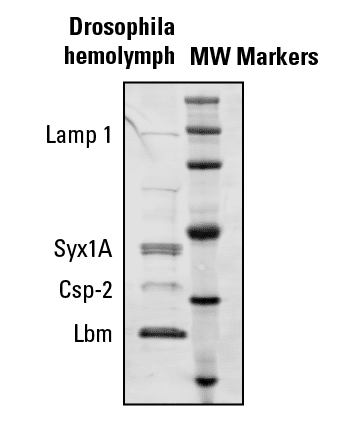 Figure 2. SmartSEC Mini provides robust isolation of EVs from Drosophila starting from 10 µL of hemolymph. Data courtesy of Dr. Karen Linnemannstöns, University of Göttingen.
Figure 2. SmartSEC Mini provides robust isolation of EVs from Drosophila starting from 10 µL of hemolymph. Data courtesy of Dr. Karen Linnemannstöns, University of Göttingen.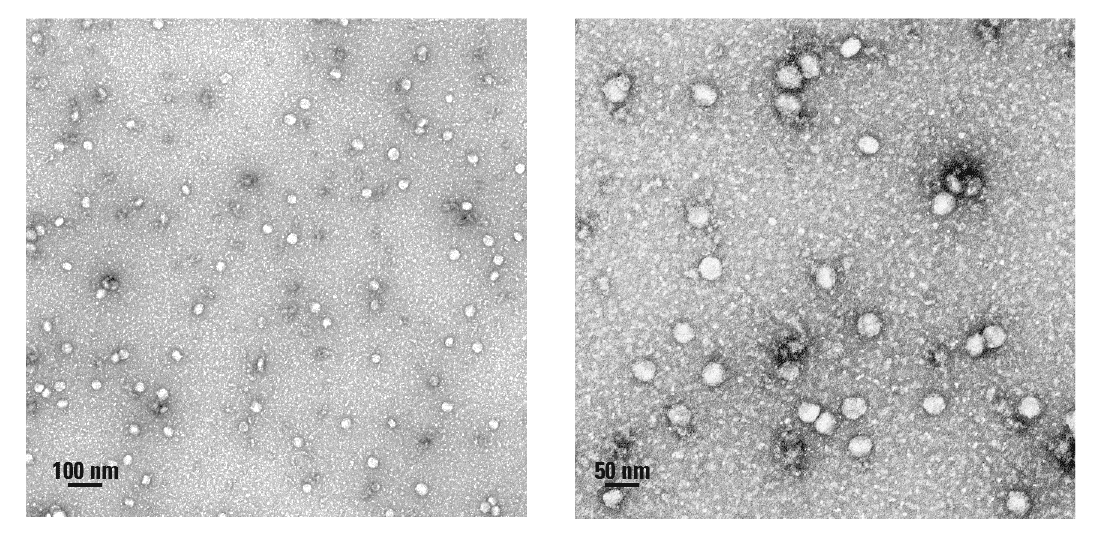 Figure 3. SmartSEC Mini provides robust isolation of EVs from 100 µL of Planaria neoblast culture media. Data courtesy of Dr. Vidyanand Sasidharan, Stowers Institute for Medical Research.
Figure 3. SmartSEC Mini provides robust isolation of EVs from 100 µL of Planaria neoblast culture media. Data courtesy of Dr. Vidyanand Sasidharan, Stowers Institute for Medical Research.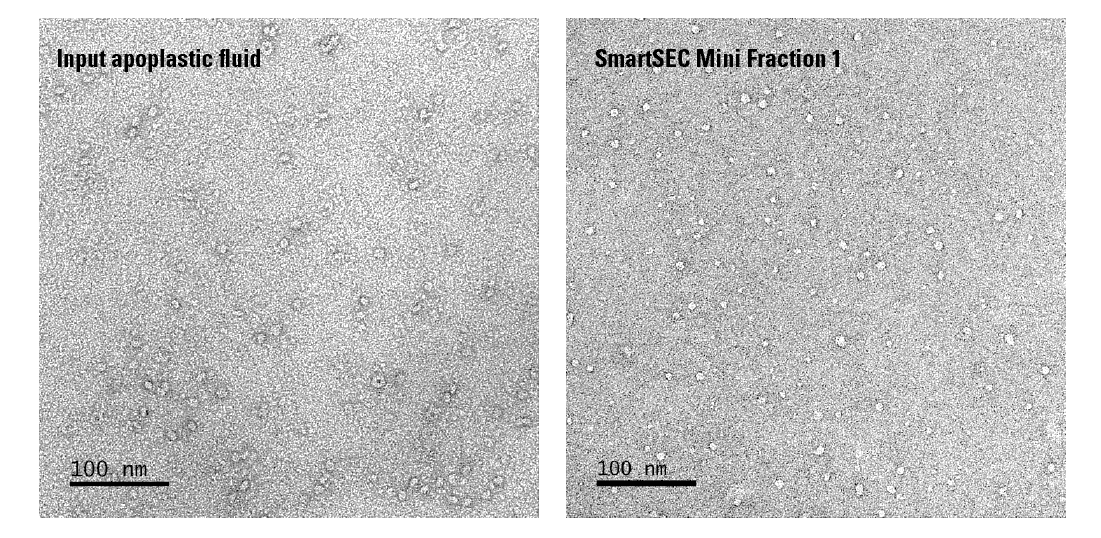 Figure 4. SmartSEC Mini provides robust isolation of EVs from 50 µL of apoplastic fluid from Arabidopsis thaliana. Sample courtesy of Dr. Claudia Uhde-Stone, California State University, East Bay.
Figure 4. SmartSEC Mini provides robust isolation of EVs from 50 µL of apoplastic fluid from Arabidopsis thaliana. Sample courtesy of Dr. Claudia Uhde-Stone, California State University, East Bay.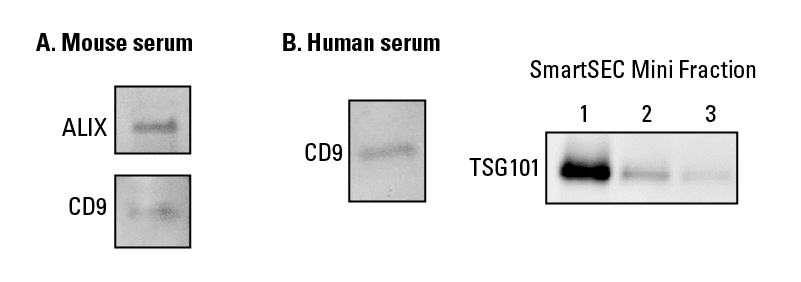 Figure 5. SmartSEC Mini delivers robust isolation of EVs from human and mouse serum.
Figure 5. SmartSEC Mini delivers robust isolation of EVs from human and mouse serum.Table 2. SmartSEC Mini delivers high yields of EVs
| Total yield | Concentration | Purity | |
|---|---|---|---|
| Mouse serum | 33.2 µg | 2.7 x 109 particles/mL | 1.7 x 107 particles/µg |
| Human serum | 25.0 µg | 2.95 x 109 particles/mL | 4.7 x 107 particles/µg |
Table 3. SmartSEC Mini delivers more EVs than a competitor’s product
| Fraction | Total yield | |
|---|---|---|
| SmartSEC Mini | 1 | 128.0 µg |
| 2 | 40.8 µg | |
| "q" SEC columns | 1 | 10.2 µg |
| 2 | 15.1 µg | |
| 3 | 14.1 µg | |
| 4 | 19.4 µg | |
| 5 | 37.2 µg |
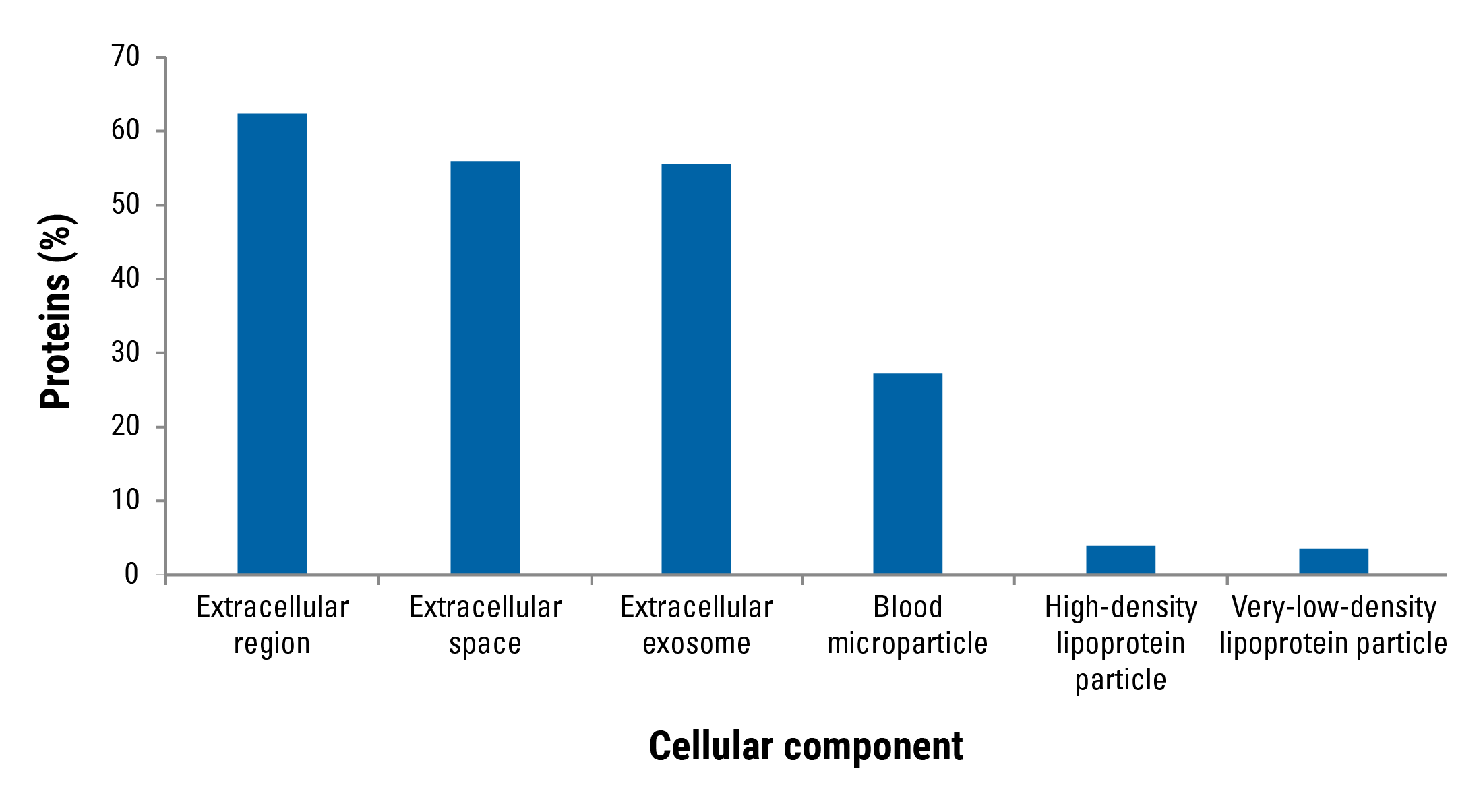 Figure 6. Mass spectrometry analysis demonstrates that SmartSEC Mini preferentially isolates EVs.
Figure 6. Mass spectrometry analysis demonstrates that SmartSEC Mini preferentially isolates EVs.Table 4. Common EV-associated proteins identified from mass spec analysis of EVs isolated with SmartSEC Mini
| UniProt accession number | Description |
|---|---|
| P60709 | Actin, cytoplasmic 1; Beta-actin |
| P02765 | Alpha-2-HS-glycoprotein |
| P62805 | Histone H4 |
| P26927 | Hepatocyte growth factor activator |
| B4DY90 | Tubulin beta chain |
| P00338 | L-lactate dehydrogenase A chain |
| P08183 | ATP-dependent translocase |
| P80108 | Phosphatidylinositol-glycan-specific phospholipase D |
| P55058 | Phospholipid transfer protein |
| P21926 | CD9 antigen |
| P11597 | Cholesteryl ester transfer protein |
| P07355 | Annexin A2 |
| P08238 | Heat shock protein HSP 90-beta; HSP 90 |
| P08962 | CD63 antigen |
FAQs
Documentation
Citations
Related Products
Products
| Catalog Number | Description | Size | Price | Quantity | Add to Cart | |||
|---|---|---|---|---|---|---|---|---|
| SSEC100A-1 | SmartSEC™ Mini EV Isolation System | 10 Reactions | $532 |
|
||||
Overview
Overview
Explore new frontiers in EV biology
Whether it’s precious clinical samples or hard-to-collect biofluids from developmental biology model organisms, researchers are increasingly challenged by the need to isolate EVs from quite limited sample volumes. To support these researchers, SBI has configured our powerful SmartSEC™ technology into the first commercially available kit optimized for isolating EVs from 10 – 100 µL of biofluid (Table 1). Validated for samples from Drosophila, Planaria, and Arabidopsis, as well as human, mouse, and rat, the SmartSEC™ Mini EV Isolation System is ready to help you push the boundaries of EV biology.
Table 1. SmartSEC Mini recommended input volumes
| Organism | Biofluid | Input volume |
|---|---|---|
| Drosophila melanogaster | Hemolymph | 10 µL |
| Planaria | Cell culture | 100 µL |
| Arabidopsis Thaliana | Apoplastic fluid | 50 µL |
| Mouse, rat, human | Serum/plasma | 10 - 25 µL |
SmartSEC Mini is a proprietary chromatography-based EV isolation technology that combines all the benefits of size exclusion chromatography (SEC)—purity, yield, reproducibility, and preservation of EV integrity—with a contaminant trapping feature that overcomes the limitations of conventional SEC for fast, easy, and low sample-volume EV isolation.
- The only commercially available EV isolation kit for sample volumes as low as 10 µL
- Great for isolating EVs from a range of biofluids
- Validated in samples from human as well as model developmental biology organisms such as:
- Drosophila melanogaster
- Planaria
- Arabidopsis thaliana
- Mouse
- Rat
- Delivers better purity and yield than ultracentrifugation
- Compatible with most downstream applications such as mass spectrometry, western blotting, nanoparticle tracking analysis (NTA), and transmission electron microscopy (TEM)
References
How It Works
How It Works
The SmartSEC Mini workflow is quick and easy (Figure 1). Simply pre-wash the SmartSEC Mini column, load your sample, incubate at room temperature for 30-minutes, and centrifuge for 30-seconds at 500 x g to recover isolated EVs. To maximize sample recovery, simply add more buffer to the column and collect up to two additional fractions. Figure 1. The easy SmartSEC Mini workflow.
Figure 1. The easy SmartSEC Mini workflow.Supporting Data
Supporting Data
See how well SmartSEC Mini isolates EVs from low volumes in a range of species, biofluids
SmartSEC Mini provides excellent purification of EVs from as little as 10 µL of hemolymph from Drosophila melanogaster, as demonstrated by western blot analysis of 1 µg of equivalent protein (Figure 2). Common Drosophila exosome markers are shown next to molecular weight markers. Figure 2. SmartSEC Mini provides robust isolation of EVs from Drosophila starting from 10 µL of hemolymph. Data courtesy of Dr. Karen Linnemannstöns, University of Göttingen.
Figure 2. SmartSEC Mini provides robust isolation of EVs from Drosophila starting from 10 µL of hemolymph. Data courtesy of Dr. Karen Linnemannstöns, University of Göttingen. Figure 3. SmartSEC Mini provides robust isolation of EVs from 100 µL of Planaria neoblast culture media. Data courtesy of Dr. Vidyanand Sasidharan, Stowers Institute for Medical Research.
Figure 3. SmartSEC Mini provides robust isolation of EVs from 100 µL of Planaria neoblast culture media. Data courtesy of Dr. Vidyanand Sasidharan, Stowers Institute for Medical Research. Figure 4. SmartSEC Mini provides robust isolation of EVs from 50 µL of apoplastic fluid from Arabidopsis thaliana. Sample courtesy of Dr. Claudia Uhde-Stone, California State University, East Bay.
Figure 4. SmartSEC Mini provides robust isolation of EVs from 50 µL of apoplastic fluid from Arabidopsis thaliana. Sample courtesy of Dr. Claudia Uhde-Stone, California State University, East Bay. Figure 5. SmartSEC Mini delivers robust isolation of EVs from human and mouse serum.
Figure 5. SmartSEC Mini delivers robust isolation of EVs from human and mouse serum.Table 2. SmartSEC Mini delivers high yields of EVs
| Total yield | Concentration | Purity | |
|---|---|---|---|
| Mouse serum | 33.2 µg | 2.7 x 109 particles/mL | 1.7 x 107 particles/µg |
| Human serum | 25.0 µg | 2.95 x 109 particles/mL | 4.7 x 107 particles/µg |
Table 3. SmartSEC Mini delivers more EVs than a competitor’s product
| Fraction | Total yield | |
|---|---|---|
| SmartSEC Mini | 1 | 128.0 µg |
| 2 | 40.8 µg | |
| "q" SEC columns | 1 | 10.2 µg |
| 2 | 15.1 µg | |
| 3 | 14.1 µg | |
| 4 | 19.4 µg | |
| 5 | 37.2 µg |
 Figure 6. Mass spectrometry analysis demonstrates that SmartSEC Mini preferentially isolates EVs.
Figure 6. Mass spectrometry analysis demonstrates that SmartSEC Mini preferentially isolates EVs.Table 4. Common EV-associated proteins identified from mass spec analysis of EVs isolated with SmartSEC Mini
| UniProt accession number | Description |
|---|---|
| P60709 | Actin, cytoplasmic 1; Beta-actin |
| P02765 | Alpha-2-HS-glycoprotein |
| P62805 | Histone H4 |
| P26927 | Hepatocyte growth factor activator |
| B4DY90 | Tubulin beta chain |
| P00338 | L-lactate dehydrogenase A chain |
| P08183 | ATP-dependent translocase |
| P80108 | Phosphatidylinositol-glycan-specific phospholipase D |
| P55058 | Phospholipid transfer protein |
| P21926 | CD9 antigen |
| P11597 | Cholesteryl ester transfer protein |
| P07355 | Annexin A2 |
| P08238 | Heat shock protein HSP 90-beta; HSP 90 |
| P08962 | CD63 antigen |

